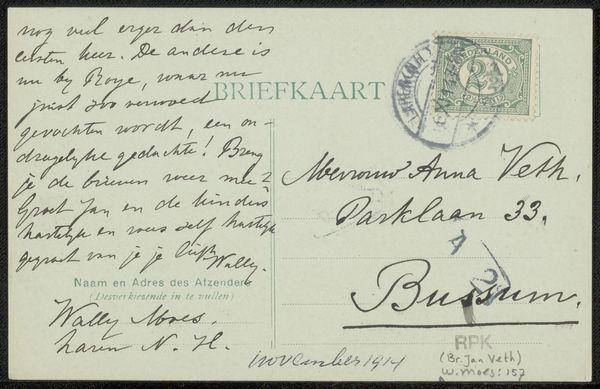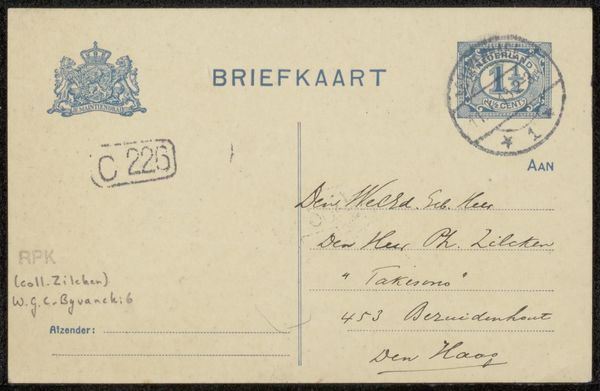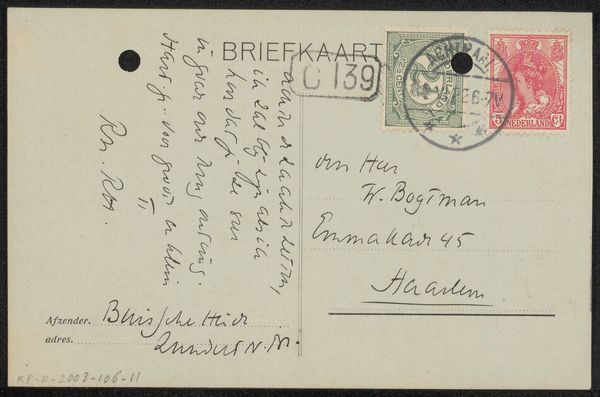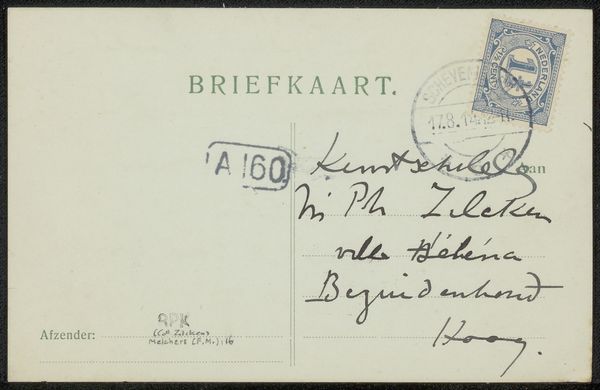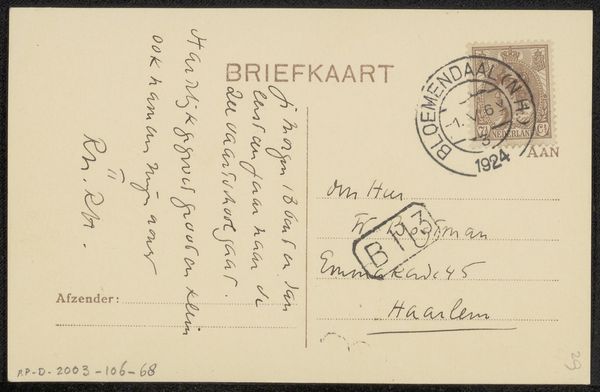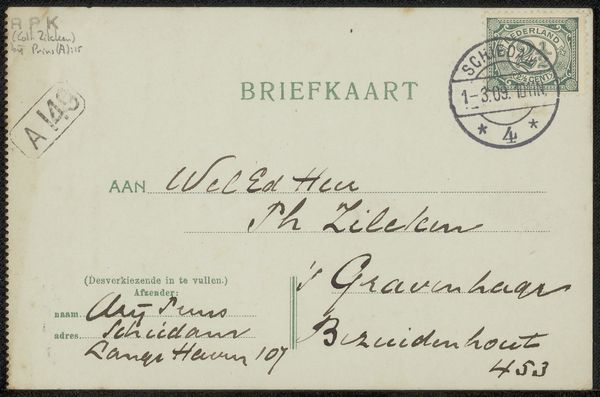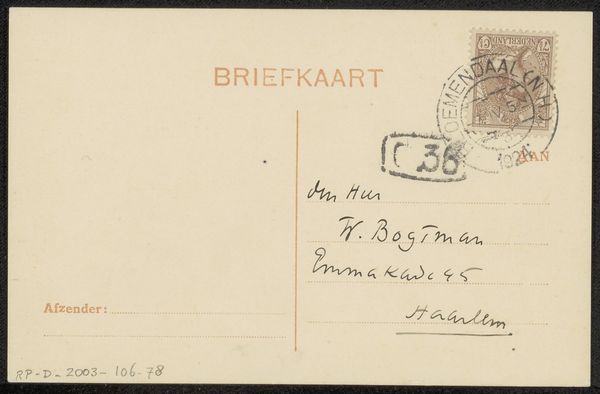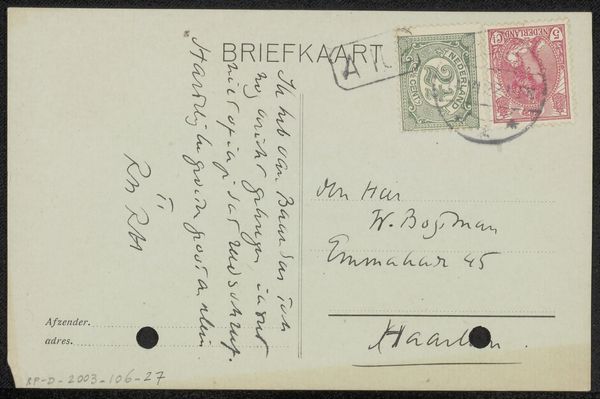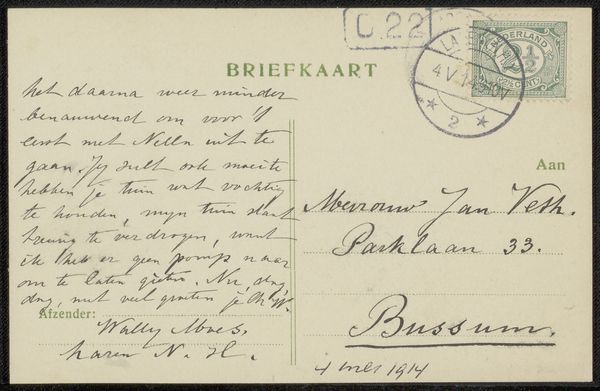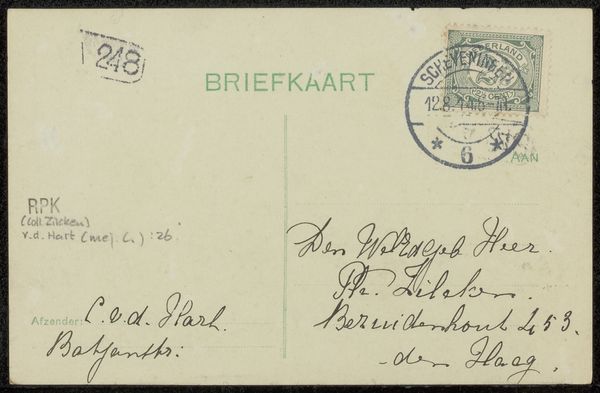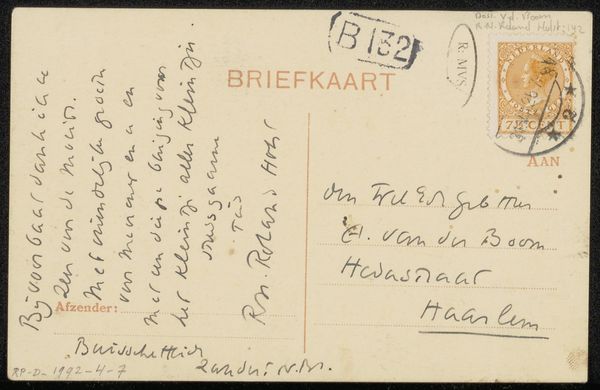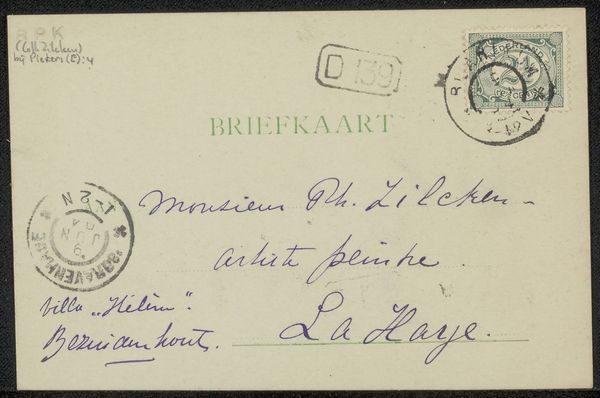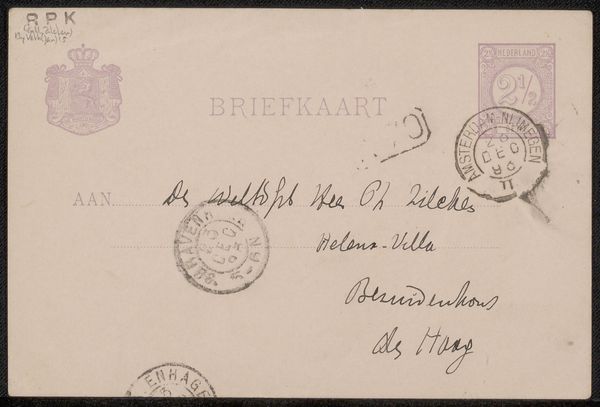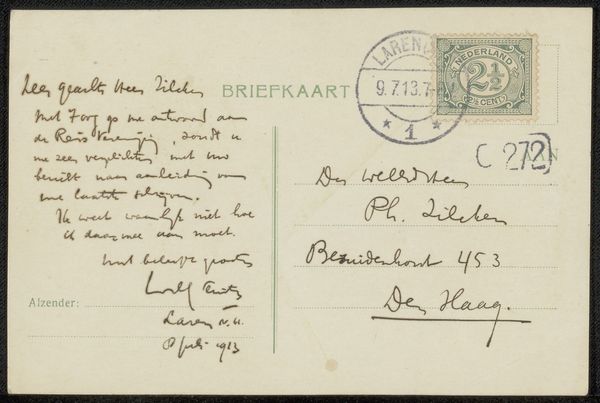
drawing, mixed-media, paper, ink, pen
#
drawing
#
mixed-media
#
script typography
#
hand-lettering
#
playful lettering
#
hand drawn type
#
hand lettering
#
paper
#
personal sketchbook
#
ink
#
hand-drawn typeface
#
pen work
#
pen
#
handwritten font
#
calligraphy
#
small lettering
Copyright: Rijks Museum: Open Domain
Curator: Let's delve into this "Briefkaart aan Philip Zilcken," a mixed-media drawing on paper crafted by Paul Lambotte in 1967. What strikes you first about this intimate piece? Editor: It's remarkably understated. The greyish ink, the practical layout – it's the banality of everyday life presented as a piece of personal correspondence. It begs the question, who was Philip Zilcken and why did Paul Lambotte, likely the renowned art critic himself, feel it was necessary to reach out and how could the socio-cultural relationship of those in the art and publishing sphere have benefited? Curator: Right, the use of paper as a common medium underscores this notion of accessibility. Looking closely, one notices the intentional blending of drawing with the practicality of a mailed message, pushing us to rethink hierarchies between 'art' and functional craft. Editor: Exactly! A postcard from this period acts as a small, yet potent, form of communication. This intersection between correspondence and art asks us to interrogate class, artistic circles, and artistic agency in ways a simple signature may not express as clearly. Consider that artists’ personal correspondence were important form of discourse for the field. The value of a handmade gesture holds a lot of power, especially during the 1960s era marked by social upheaval. Curator: Thinking about process, it would be interesting to know what inks Lambotte favored and if he had preferred pens when creating these drawings as the consistency differs slightly. This work challenges modern-day detachment from physicality, hinting towards the production of mass-produced goods rather than solely crafted goods. Editor: The act of addressing someone – painstakingly writing out a name, an address - signals the labour involved in creating intimacy through an item like a handmade postcard. So, who holds this correspondence and under what access? What value can these private acts yield as pieces on display in museums and accessible to art audiences? Curator: Indeed. In that regard, this particular mixed-media drawing serves as a compelling entry point. Thank you for those layered thoughts! Editor: My pleasure. The personal is always political!
Comments
No comments
Be the first to comment and join the conversation on the ultimate creative platform.
